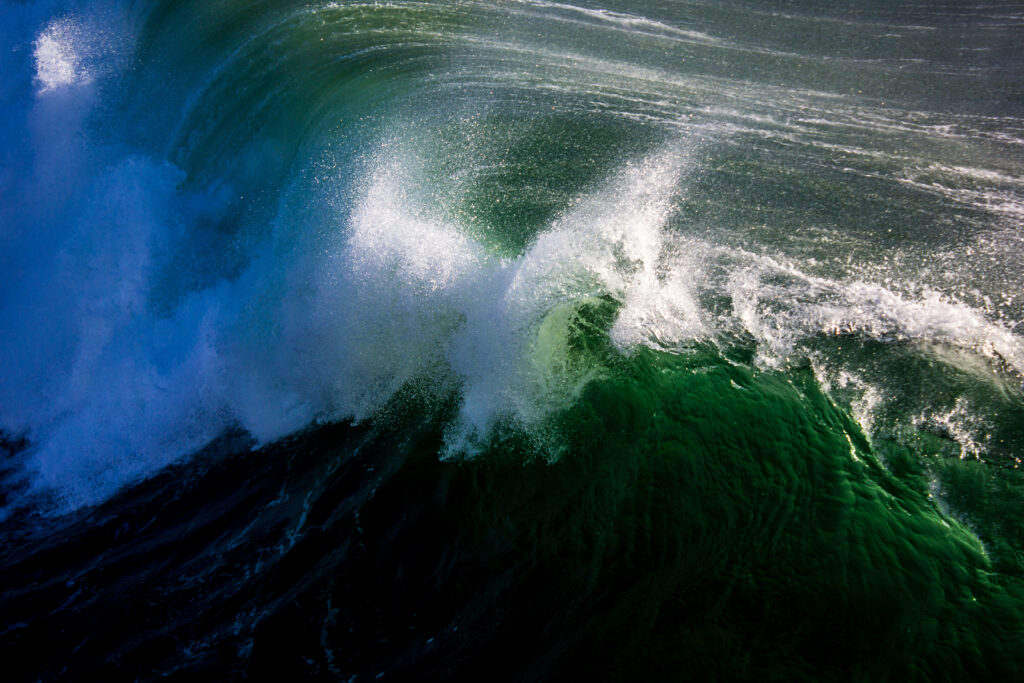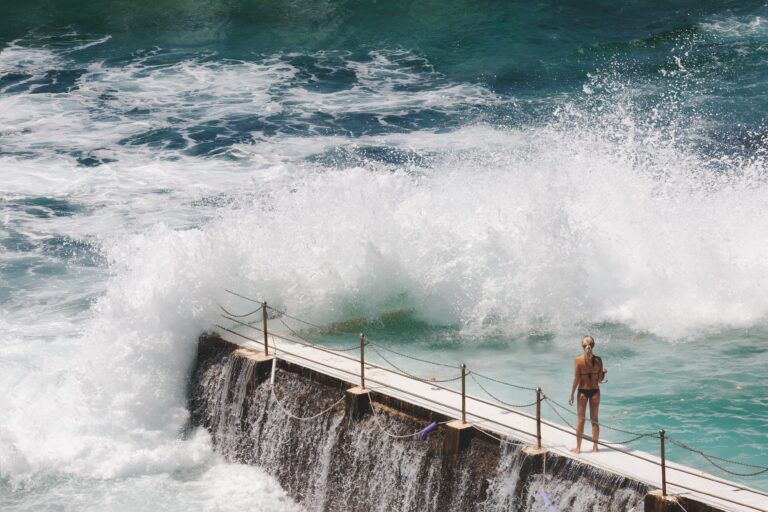Are Tsunamis Getting Worse, or Are We Just More Vulnerable?

Have you ever wondered why a wave thousands of miles away feels closer now? Maybe you’re haunted by questions like: What makes today’s tsunami risk different? Are rising seas making disasters deadlier? If so, this essay is for you. Each of the following real tsunami events reveals a deeper truth: our growing climate-linked vulnerability. Keep reading, you’ll begin to see how people, oceans, and risk are colliding in new ways.
Thesis: Why Tsunamis in 2025 Are About More Than Nature
Tsunamis themselves remain geological phenomena, not climate-driven. But human expansion, sea level rise, and fragile infrastructure are turning tsunami events into climate-amplified disasters. Coastal cities, populations, and ecosystems are all more exposed than ever. Tsunamis are no longer just about faults beneath the sea; they’re also about who we build where, and how high the ocean already stands. This explainer on 5 Real Tsunamis That Reveal Climate Risk in 2025 shows why understanding those deep connections is vital to preparing our world for future shocks.
Opposing View: Tsunamis Haven’t Changed—Why Blame Climate?
It’s fair to say: tsunami frequency hasn’t spiked due to climate change. Earthquakes remain geology’s domain. Some argue that linking climate to tsunamis gives the wrong impression—that nature still calls the shots. That’s true—but incomplete. While earthquakes don’t increase, the damage they cause does, when superimposed on rising seas, weakened ecosystems, and urban sprawl.
1. 2004 Indian Ocean Tsunami: A Catastrophe Without Warning
On December 26, 2004, a 9.1 magnitude quake off Sumatra triggered a tsunami that killed over 230,000 people across 14 countries. Coastal communities in Indonesia, Sri Lanka, Thailand, and the Maldives were devastated. (Source: WWF story on 2004 disaster and recovery lessons). The disaster also revealed that coastal ecosystems like mangroves and coral reefs offered real protection. Where mangroves remained, damage and loss were lower (Source: UNEP report on the protective role of ecosystems during the 2004 tsunami). Since then, environmental planning has included such natural “buffers” in disaster mitigation strategies. Today, sea levels are higher, and coastal development often removed these ecosystems, making future tsunamis even more dangerous.
2. 2011 Japan Tsunami: Technology Wasn’t Enough
Japan, known for advanced early-warning systems, was struck by a 9.0 quake and 40-meter tsunami. Over 18,000 people died, and the Fukushima nuclear plant suffered a meltdown (Source: BBC News article on the Fukushima nuclear disaster). Engineered seawalls proved inadequate. Even a well-prepared society found its tech outmatched by nature’s force. That raised a clear red flag: humans may overestimate infrastructure when planning under rising-risk conditions.
3. 2018 Sulawesi Tsunami: Communication Broke Down
A 7.5 magnitude quake near Sulawesi triggered a tsunami within 10 minutes, killing over 4,000 people. Despite warning systems, many residents didn’t evacuate in time. Authorities later confirmed that bad equipment, poor outreach, and mistrust played key roles (Source: Time article on Indonesia’s Sulawesi tsunami and human vulnerabilities). In areas facing faster sea-level rise and coastline collapse, local resilience matters even more.
4. 2022 Tonga Tsunami: A Volcano’s Reach Beyond Destruction
When the Hunga Tonga–Hunga Ha’apai volcano erupted, it triggered a tsunami that spread across the Pacific. Satellites recorded enormous atmospheric disruption, including massive water-vapor injection and temporary cooling (Source: NASA article on the Hunga Tonga eruption’s atmospheric effects). Global climate models, including one from NOAA, are now being recalibrated to include volcanic and atmospheric triggers—because warming oceans change how these events play out (Source: NOAA article on the Hunga Tonga tsunami). Although climate change didn’t cause the eruption, the ocean’s warming and shifting behavior could affect how underwater volcanoes interact with sea surfaces, making events more complex.
5. 2025 Kamchatka Quake & Tsunami Warning: A Near-Miss Alert
In mid-2025, a quake off Kamchatka Peninsula triggered tsunami warnings across Japan and Hawaii. No catastrophic wave hit, but the near miss highlighted how climate-linked coastal exposure is increasing. Rising seas and shifting storm patterns make risk zones unpredictable, and alerts must keep pace. (Note: The 2025 Kamchatka event is a hypothetical scenario to illustrate future risk based on current trends.)
Why Climate Enhances Tsunami Threats
- Sea level rise allows waves to penetrate further inland.
- Ecosystem loss (like reefs or mangroves) reduces natural wave dampening.
- Skinny warning windows in fast-moving events in melting and unstable coastal areas.
- Infrastructure built close to shore multiplies human exposure.
In short: climate change isn’t creating tsunamis, but it makes them deadlier when they occur.
Dark Humor Moment
Imagine Earth’s tectonic plates texting us: “Sorry, just broke your coastline…” Only we have to clean up the mess.
Lessons from the Last Two Decades
Since 2004, global efforts like UNESCO’s Tsunami Day, regional early-warning networks, and community-based education have advanced tsunami preparedness (Source: UNESCO article on Tsunami Preparedness and Awareness). Yet human geography is changing faster—coastal cities are growing where they can’t afford to.
Final Thoughts: The Bigger Wave Is Climate Exposure
Tsunamis remain geologic events. Still, the disaster risk they pose is increasingly climate-linked. To reduce harm, we must build smarter: preserve ecosystems, educate communities, and plan evacuations using modern understanding of rising seas and changing coastlines. Your next step: review local hazard maps, push for nature-based defenses, and support climate-resilient infrastructure projects. When the next wave comes, we’ll be more than luck-based, we’ll be prepared.
Sources:
- WWF story on 2004 disaster and recovery lessons: https://wwf.panda.org/knowledge_hub/where_we_work/indonesia/sumatra/tanjung_puting_national_park/coastal_conservation/?41804/Mangroves-A-Natural-Defense-Against-Tsunamis
- UNEP report on the protective role of ecosystems during the 2004 tsunami: https://www.unep.org/news-and-stories/story/mangroves-natural-defense-against-tsunamis
- BBC News article on the Fukushima nuclear disaster: https://www.bbc.com/news/world-asia-pacific-12709598
- Time article on Indonesia’s Sulawesi tsunami and human vulnerabilities: https://time.com/5412497/indonesia-sulawesi-tsunami-death-toll-why/
- NASA article on the Hunga Tonga eruption’s atmospheric effects: https://www.nasa.gov/feature/jpl/tonga-eruption-blasted-unprecedented-amount-of-water-into-stratosphere/
- NOAA article on the Hunga Tonga tsunami: https://oceanservice.noaa.gov/news/tonga-tsunami-explained.html
- UNESCO article on Tsunami Preparedness and Awareness: https://www.unesco.org/en/articles/five-things-you-need-know-about-tsunamis




